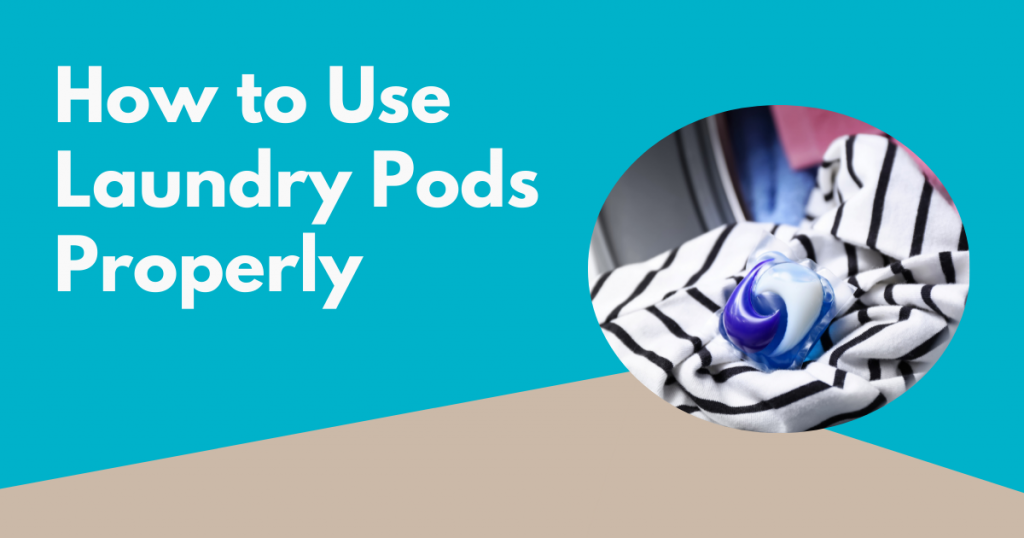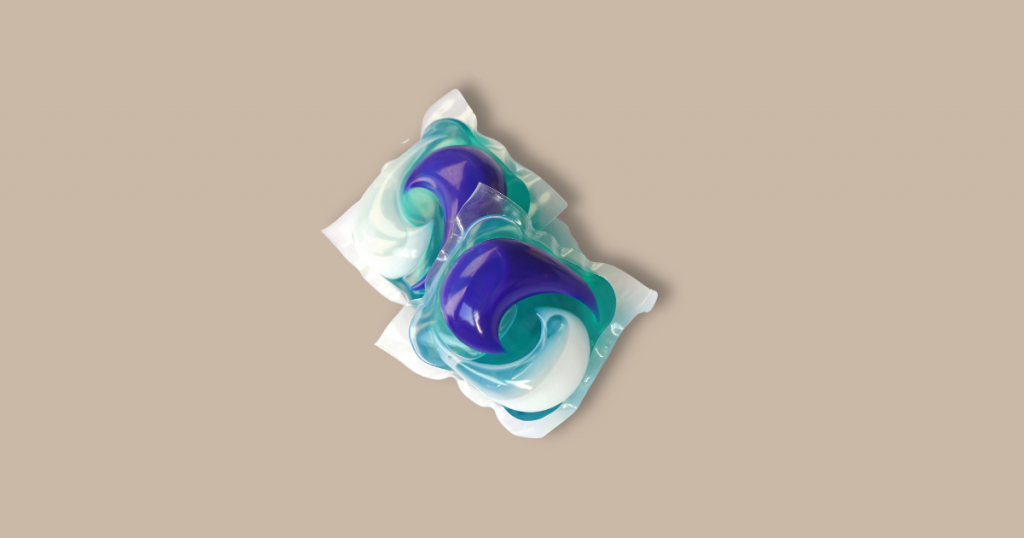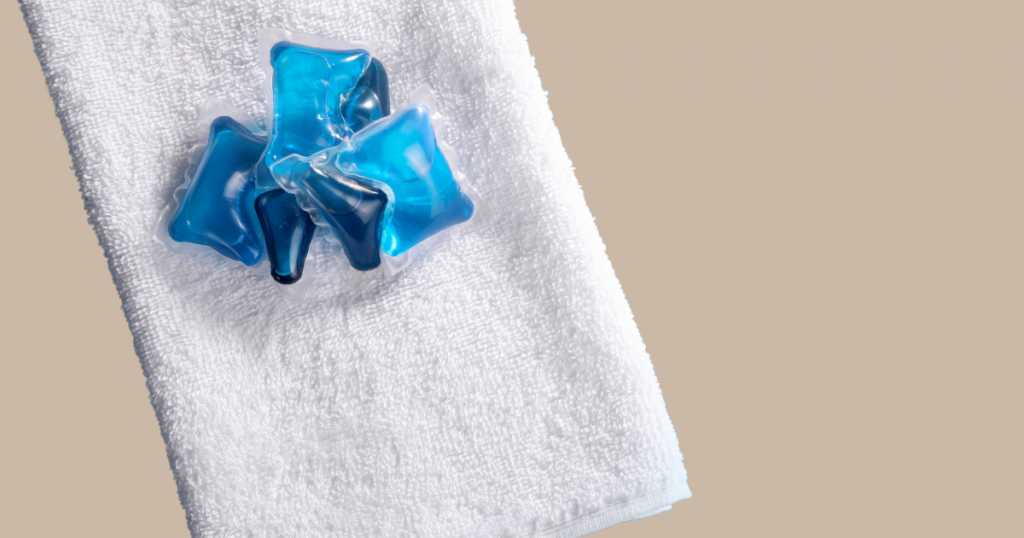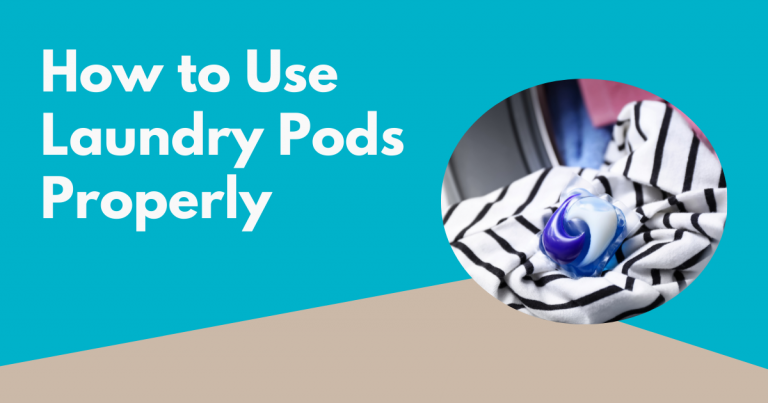
For someone who finds it satisfying to see an empty laundry basket, I was both ecstatic and doubtful when Tide released the first laundry pod in the market. A tiny pack of laundry detergent that promises efficient stain removal and brightening in one convenient almost candy-looking pack. Who would not be curious?
Unlike other types of laundry detergents on the market, laundry detergent pods offer a compact solution to your washing needs. Laundry pods contain concentrated detergent that can be used even with high-efficiency washers. But how do you exactly use them?
Maybe you ran into trouble using laundry pods such as a few spottings and streaking in your clothes after washing them. Or you’re wondering if you’ve put enough pods for your load of laundry, we’re here to provide you with instructions on how to use them correctly.
How Do Laundry Pods Work
Small as they are, laundry pods are super concentrated detergents that perform like liquid detergents in removing dirt and stain. They also brighten fabric. Unlike their liquid counterparts, laundry pods are packed conveniently hence you don’t risk spilling. Plus they are pre-measured already.
Laundry detergent pods also work well with high-efficiency washers or washing machines that use less water during the cycle. This is because they produce less suds to remove the soil when rinsing. One misconception when washing clothes is that you need more suds to get them cleaned. You don’t need excess detergent when you wash clothes or to remove stains as too many suds can re-deposit dirt on fabric.
Using Laundry Pods

Using single-dose products such as laundry detergent pods or fabric softener pods is convenient but can be tricky. Use them haphazardly and you might end up with trouble in the laundry. So we suggest you carefully follow usage instructions. Or simply use our guidelines provided below depending on the washing machine type you are using.
How to Use Laundry Pods in a Front Loader
- Always have clean dry hands when handling pods. Although the packets look like plastic, they are water-soluble and may dissolve if you use wet hands.
- Place the laundry pod at the back or bottom of your washing machine. Skip the detergent dispenser found on your front load washer.
- Add the pod directly to the bottom of the drum before you load your clothes and water.
- Coldwater during winter may not dissolve laundry detergent pods completely. Dissolve the pods first in hot water before putting them at the back or bottom of your empty washer.
- Reseal the container and store it somewhere cool and dry. Keep them away from children.
How to Use Laundry Pods in a Top Loader
- Clean dry hands are a must when handling pods. The packets look like plastic, but they melt easily upon contact with water.
- The laundry pod must be placed at the bottom of the washer. Add the clothes and water afterward.
- Dissolve the pods first in hot water before putting them at the back or bottom of your empty washer especially during cold weather.
- Place the laundry pods somewhere cool and dry and keep them out of reach of children.
How Many Laundry Detergent Pods Should I Use?

The amount of laundry pods to use varies upon the weight of your load and how soiled they are. Usually, one pod is enough to wash a normal load of laundry that has a typical capacity of 12 pounds. Two pods are needed if your washing machine has an extra-large drum. They can accommodate up to 20 pounds of laundry.
Always remember that you should not overfill your laundry tub. Place the clothes loosely until the washer is ⅔ full.
Extra soiled clothes may also need two detergent pods to do their work.
When Can I Add Laundry Pods to the Washer?
Always add laundry detergent pods at the bottom or back of your washer before you place your laundry load. Then you add water afterward. If you put pods on top of your load of clothes, they may not dissolve completely. This causes streaks and spotting from the detergents deposited on clothes.
Dissolve Laundry Detergent Pods Correctly to Avoid Streaking and Spotting
The common problems encountered when using laundry detergent pods are streaking and spotting. These happen when detergents from the pods do not dissolve completely. This is why it is important to place your laundry detergent pods at the back or bottom of the washer’s drum. Afterward, you can add your laundry load and water.
Water is needed to dissolve laundry detergent pods properly. An overstuffed washer may cause streaks on clothes. Only fill loose garments up to ⅔ of the tub to avoid overstuffing.
During the cold months, it is advisable to dilute your laundry detergent pods with hot water before adding them to the empty drum. This is to make sure that pods dissolve properly.
More Helpful Tips About Using Laundry Pods
- Dry hands are essential when handling pods. The film is made up of biodegradable materials that dissolve quickly upon contact with water. Keep the storage container sealed when not in use so they don’t melt.
- The candy-looking pods may be attractive to children or pets but they can squirt into eyes or mouths when punctured. Like other household detergents, laundry detergent pods contain concentrated and poisonous chemicals. Remember to keep them out of reach of children or pets. Call 911 immediately should there be any untoward emergency.
FAQ About Laundry Pods
Below are some FAQs on laundry detergent pods:
Are you supposed to cut laundry pods open?
Do not cut laundry detergent pods open. A pod’s film is made up of biodegradable materials that easily dissolve upon contact with water. Since this type of detergent is highly concentrated, it can irritate the skin upon contact.
Are laundry pods plastic?
A pod may look like it is covered in plastic, however, the film covering it is made up of polyvinyl alcohol (PVA) film. It is a synthetic polymer that easily dissolves upon contact with liquid.
Where does the plastic from the laundry pods go?
The gel film melts and breaks down during the washing cycle. Then it flows away with the wastewater.
Can laundry pods clog the washer?
No, laundry detergent pods don’t clog washing machines. These products are already premeasured and highly concentrated in a single pack. This ensures you are not using excess detergent and do not cause soap build-up.
Do you put laundry pods in before or after clothes?
Always put pods at the bottom or back part of the drum before you add loads and water to the washer. This is to dissolve the pods completely and to avoid streaking in fabrics.
Why do my laundry pods keep getting stuck in the washer door?
If a pod keeps getting stuck in the washer door, you are probably not placing them correctly. To avoid this, don’t forget to place your pod at the very bottom or back of your washing machine. Add your soiled clothing and water afterward.
Why are the laundry pods not dissolving in the water?
The following may be the reasons why they don’t dissolve properly:
- You did not place your laundry detergent pods at the bottom or back of the washer before you add your clothes.
- The water is too cold. Dilute the pods in hot water first before you pour them into the drum during winter.
- You overfilled your tub with garments. Only fill ⅔ of the drum with loose clothing.
- Don’t use too many pods than necessary.
Why are laundry pods staining my clothes?
Laundry detergent pods may be staining your clothes if they are not dissolving properly.
Are laundry pods better than liquid detergent?
Compared to liquid detergent, laundry pods are convenient and you do not need to eyeball the amount of product you put in all the time. But unlike liquid detergent, they can’t be used for handwashing or doing spot cleaning of stains.
Summary
Laundry detergent laundry pods offer a compact solution to your washing needs. Laundry pods contain concentrated detergent that can be used even with high-efficiency washers. They dissolve fast so handle them with clean dry hands. To avoid streaking and spots, place the pods at the bottom of the washer before you add your clothes and water. Always remember not to overfill your tub with clothes!
Want to share this?

